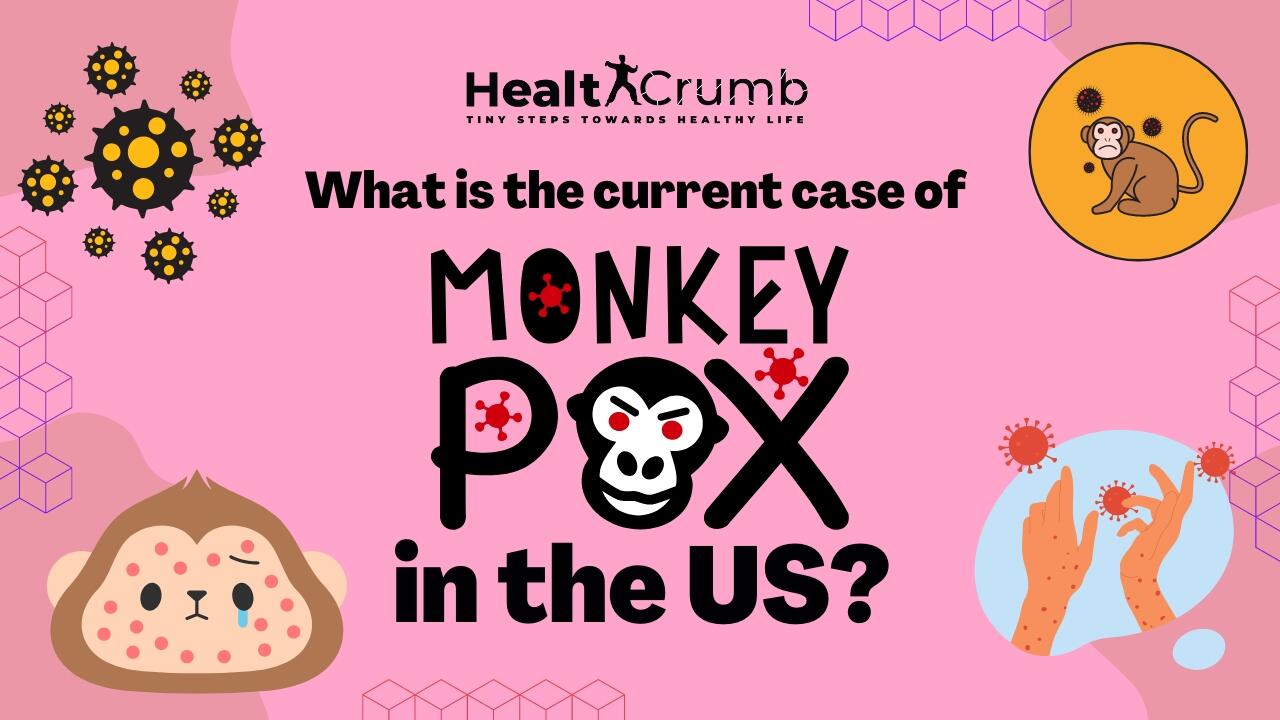Introduction
On September 21, 2018, the Centers for Disease Control and Prevention (CDC) notified the public of an outbreak of monkeypox in the United States. This is the first time monkeypox has been seen in the country since 2003 when there was an outbreak in several Midwestern states. So far, there have been three confirmed cases of this viral disease in the US: one each in Illinois, Indiana, and Wisconsin. All three patients became sick after coming into contact with pet prairie dogs that were infected with the virus.
While monkeypox is considered a rare disease, it is important to be aware of the symptoms and how to prevent it from spreading. Read on for more information about monkeypox and what you can do to protect yourself.
What is monkeypox?
Similar to smallpox, monkeypox is a very rare viral disease. Symptoms include fever, headache, muscle aches, backache, swollen lymph nodes, chills, and rash. The rash starts as small red bumps that eventually turn into vesicles (fluid-filled blisters). Monkeypox is a self-limited disease, and most people recover within 2-4 weeks.
However, it can be fatal in some cases. There is no specific treatment for this viral disease and there is no vaccine available. It is found mostly in Central and West Africa. The last outbreak of monkeypox in the United States occurred in 2003, when there were about 100 cases. The majority of these cases were in Midwestern states, and most of the people who got sick had close contact with prairie dogs that were infected with the virus.
In May 2018, there was an outbreak of this viral disease in the Democratic Republic of Congo (DRC), which is located in Central Africa. This is the largest outbreak of monkeypox ever recorded, with over 3,000 cases reported. In response to this outbreak, the World Health Organization (WHO) released a statement urging people to get vaccinated against smallpox if they are traveling to areas where monkeypox is present.
How is monkeypox spread?
Monkeypox is a viral infection that is spread through contact with the bodily fluids or infected skin of an animal or human. The virus can also be spread through close contact with an infected person, such as sharing utensils or touching an infected person’s skin. The disease can also be spread through the air, although this is less common, but you should try to prevent the spread of germs.
Symptoms include fever, headache, muscle aches, and a rash that typically starts on the face and spreads to other parts of the body. Monkeypox is a rare disease, but it can be fatal in some cases. No specific treatment has been developed as such, but the symptoms of monkeypox can be treated with antiviral drugs and pain relievers.
There is no specific vaccine for monkeypox, but the smallpox vaccine can provide some protection against the disease. It is also important to avoid contact with bodily fluids or infected skin of animals or humans. If you must come in contact with an infected person, it is important to wear gloves and a mask.
What are the symptoms of monkeypox?
Monkeypox is caused by a virus called the monkeypox virus (MPV). MPV is found in animals such as monkeys, rats, and rabbits. It can also infect humans through contact with infected animals or their body parts (such as meat or fur). Humans can also be infected through contact with contaminated objects (such as bedding or clothing) or from close contact with an infected person (such as through coughing or sneezing).
There are three stages of infection. The first stage, which lasts for two to four days, is characterized by the sudden onset of fever and flu-like symptoms such as headache, muscle aches, exhaustion, and loss of appetite. A few days after the fever begins, the patient may develop a rash that starts on the face and spreads to the rest of the body. The second stage lasts for another week or two and is characterized by more severe rashes as well as lesions and blisters filled with fluid. In some cases, patients may also experience nausea, vomiting, chest pain, and difficulty breathing. The third stage lasts for another week or two and is characterized by the gradual fading of the rash.
The current case of monkeypox in the US
The last outbreak of monkeypox in the United States occurred in 2003 when a traveler from Africa brought the virus to this country. Since then, there have been no reported cases of monkeypox in the United States.
However, on September 21, 2018, the Centers for Disease Control and Prevention (CDC) announced that a patient in Wisconsin had been diagnosed with monkeypox. The patient had recently traveled to Nigeria, where there is currently an outbreak of the virus.
This is the first case of monkeypox reported in the United States since 2003. The CDC is working with state and local health officials to investigate this case and to monitor for any additional cases.
The current case of monkeypox in the US is a single individual who became ill after traveling to Nigeria. The patient is currently being treated at a hospital in Texas and is in stable condition. This is the first case of monkeypox diagnosed in the US since 2003, and public health officials are working to identify and monitor anyone who may have come into contact with the patient.
How is monkeypox treated?
There is no specific treatment for monkeypox. However, supportive care can be provided to help relieve symptoms. This may include giving the person pain relievers, providing a cool environment, and offering fluids to prevent dehydration. For more severe cases, hospitalization may be necessary so that the person can be monitored and receive intensive supportive care.
There is currently no vaccine available for monkeypox in the United States, but there is an investigational vaccine that is being tested. The best way to prevent the disease is to avoid contact with animals that are known or suspected to carry the virus and to avoid contact with infected people.
Can monkeypox be prevented?
There is no specific prevention for monkeypox. However, smallpox (vaccinia) vaccines may provide some protection against monkeypox. The best way to avoid infection is to avoid contact with infected animals or people.
If you must come into contact with an infected person, you should wear gloves, a mask, and other protective clothing. It is also advisable to wash your hands often with soap and water.
In areas where outbreaks have occurred, health authorities may recommend vaccination of people who have close contact with infected animals or people, such as household members, animal handlers, and laboratory workers.
Conclusion
As of right now, there is only one confirmed case of monkeypox in the United States. However, this does not mean that people should not be vigilant about the disease. People who have recently been to Africa or have had contact with someone who has been to Africa should monitor their health closely and see a doctor if they develop any of the above symptoms.



